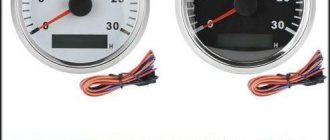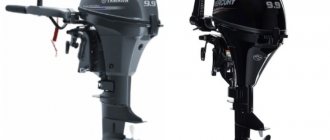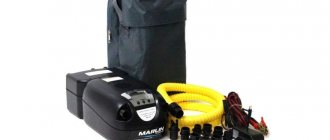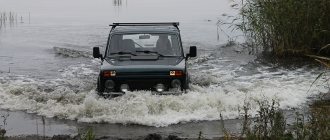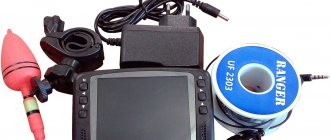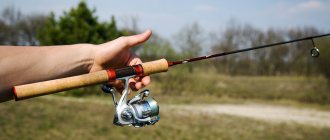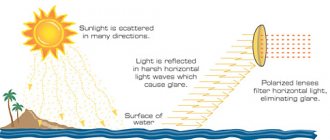Water jet or propeller
The jet outboard motor, with enviable regularity, is subject to various kinds of criticism.
But we can say with confidence that harsh negative criticism is unfounded. And, to be more precise, we can safely say that a water jet cannot be replaced in many situations. One of such situations is, of course, everything related to shallow water. After all, the water intake, or skimming of the jet nozzle, protrudes from under the bottom on the transom of the boat, just a couple of centimeters. Therefore, on a boat you can safely break into the coastal area without fear of the propeller. Well, rocky mountain rivers are clearly his element. The best quality water jet outboard motor, used in landing assault boats in many countries. After a tight “Scandinavian” style of mooring to the sloping shore, the water cannon nozzle is blocked by a deflector and the reverse jet directed to the bow of the boat allows you to go out into open water, washing away the hull of the vessel.
A jet outboard motor does not use a propeller, which means it is completely safe for people and animals in the water, which explains its use on many rescue boats and boats. Moreover, there are many water areas where the use of propellers is simply prohibited. And, of course, it’s difficult to imagine jet skis with propellers.
Water-jet propulsors are used, as a rule (but not always), on planing boats and cutters. Moreover, their size does not end with the Canadian aluminum punt. Passenger ferries and military boats are also among them. And for a reason.
The common misconception that the efficiency of a water jet is much lower than a propeller stems from theoretical analysis in the 60s and has simply been taken for granted. However, it was dispelled in the 90s. True, in this case we are talking about speeds above 25 knots and not about all designs. The problem of the initial acceleration of water cannons is gradually being solved by the introduction of technological innovations, one of which is a variable parameter of the input and output channels.
As for the reliability of a boat motor with a water jet attachment, the service life of the engine itself must obviously be higher than that of a similar screw motor. This is due to the fact that the load on the engine does not (almost) change in any way, depending on the load of the vessel. While outboard motors with propellers are characterized by such phenomena as under-torque or over-torque (when there is no possibility of quickly replacing the propeller or changing the pitch of the blades). It is worth noting that this does not apply to all models of jet outboard motors.
A common mistake made by those who like to race along a shallow mountain river with a jet boat motor is to forget (or not know) that it is necessary to remove the deadwood stopper from the “reverse” position. However, this must be done on any outboard in order to avoid losing the transom or gearbox of the PLM, your favorite boat, when the underwater part of the outboard motor encounters an obstacle. To be fair, it is worth saying that, in fact, running around in shallow water with a water cannon is not as painless for the drive as it is positioned by dealers. You can easily catch small stones in the water intake, and the sand that meets the impeller acts as a good abrasive. As a result of the latter, the diameter of the impeller is constantly decreasing (and the impeller cup is increasing), which automatically means that the drive performance will drop quite quickly.
In addition to the above: a water-jet outboard motor, contrary to myths, happily sucks in various floating debris. But in order to get rid of it (this is not always required, of course, often, the impeller works like a blender), you need to disassemble the nozzle, which, compared to a propeller, is not a quick procedure. After all, after you have wound any debris around the propeller, you just need to turn on the reverse gear to clear it.
Buy a boat: water jet vs propeller
The jet outboard motor, with enviable regularity, is subject to various kinds of criticism. But we can say with confidence that harsh negative criticism is unfounded. And, to be more precise, we can safely say that a water cannon cannot be replaced in many situations.
One such situation is, of course, anything that involves shallow water. After all, the water intake, or skimming of the jet nozzle, protrudes from under the bottom on the transom of the boat, just a couple of centimeters. Therefore, on a boat you can safely break into the coastal area without fear of the propeller. Well, rocky mountain rivers are clearly his element.
The best quality water jet outboard motor, used in landing assault boats in many countries. After a tight “Scandinavian” style of mooring to the sloping shore, the water cannon nozzle is blocked by a deflector and the reverse jet directed to the bow of the boat allows you to go out into open water, washing away the hull of the vessel.
A jet outboard motor does not use a propeller, which means it is completely safe for people and animals in the water, which explains its use on many rescue boats and boats. Moreover, there are many water areas where the use of propellers is simply prohibited. And, of course, it’s difficult to imagine jet skis with propellers.
Water-jet propulsors are used, as a rule (but not always), on planing boats and cutters. Moreover, their size does not end with the Canadian aluminum punt. Passenger ferries and military boats are also among them. And for a reason.
The common misconception that the efficiency of a water jet is much lower than a propeller stems from theoretical analysis in the 60s and has simply been taken for granted. However, it was dispelled in the 90s. True, in this case we are talking about speeds above 25 knots and not about all designs. The problem of the initial acceleration of water cannons is gradually being solved by the introduction of technological innovations, one of which is a variable parameter of the input and output channels.
Here, by the way, is an interesting publication about a comparison of three types of drive: “Comparative tests of suspension, sterndrive and water jet.”
As for the reliability of a boat motor with a water jet attachment, the service life of the engine itself must obviously be higher than that of a similar screw motor. This is due to the fact that the load on the engine does not (almost) change in any way, depending on the load of the vessel. While outboard motors with propellers are characterized by such phenomena as under-torque or over-torque (when there is no possibility of quickly replacing the propeller or changing the pitch of the blades). It is worth noting that this does not apply to all models of jet outboard motors.
A common mistake made by those who like to race along a shallow mountain river with a jet boat motor is to forget (or not know) that it is necessary to remove the deadwood stopper from the “reverse” position. However, this must be done on any outboard in order to avoid losing the transom or gearbox of the PLM, your favorite boat, when the underwater part of the outboard motor encounters an obstacle.
To be fair, it is worth saying that, in fact, running around in shallow water with a water cannon is not as painless for the drive as it is positioned by dealers. You can easily catch small stones in the water intake, and the sand that meets the impeller acts as a good abrasive. As a result of the latter, the diameter of the impeller is constantly decreasing (and the impeller cup is increasing), which automatically means that the drive performance will drop quite quickly.
In addition to the above: a water-jet outboard motor, contrary to myths, happily sucks in various floating debris. But in order to get rid of it (this is not always required, of course, often, the impeller works like a blender), you need to disassemble the nozzle, which, compared to a propeller, is not a quick procedure. After all, after you have wound any debris around the propeller, you just need to turn on the reverse gear to clear it.
If you seriously delve into hydrodynamics and losses for both drive options, it immediately becomes clear that this topic is very difficult. There is too much dependence on many factors, and many more will remain unaccounted for. Therefore, if your friend, not being an expert designer of ship drives, boldly talks about the disadvantages or advantages of water-jet outboard motors, turn a blind eye to it.
In conclusion, we can say that many of the same anglers who switched from a propeller to a water jet, and loudly express its negative aspects, never want to return to a propeller propulsion system. Intelligent control systems, which were previously inaccessible to consumers, radically solve the problem of water jet performance in all operating modes. But this is so far only available on large ships specially designed for water-jet propulsion.
Considering that we are still stuck at the level of the simplest mechanics, then debates about mechanical engines will go on forever, to the delight of thriving forums.
Mikhail Safronov, for GoodBoating.ru magazine
Water jet or outboard motor with propeller
in Soviets 0 15,
Water cannons have been used in the world for a long time as propellers for boats and motors, more precisely since the 50s of the 20th century. It was originally a New Zealand idea. The islanders needed a safe outboard motor that could be used safely and reliably on shallow rivers to deliver a variety of cargo to hard-to-reach places. But for more or less commercial and widespread use of water cannons we had to wait about 50 years. It wasn't until the 1990s that water jets began to compete with traditional outboard motors in both price and efficiency.
About water cannons
Wikipedia verb:
Water-jet propulsion (water cannon)
- this is a propulsion device in which the force moving the vessel is created by a stream of water pushed out of it (jet thrust). It is essentially a water pump that operates underwater. They are usually used on ships sailing in shallow waters.
Water jet propulsion has been used around the world since the 1950s.
It was New Zealanders who invented a boat motor that could be used safely and reliably on shallow rivers to deliver a variety of cargo to hard-to-reach places. But for more or less commercial and widespread use of water cannons, they waited about 50 years.
Comparison of a water jet and an outboard propeller motor
Safety
The obvious advantage is the absence of a propeller. This is especially true when the vessel is often surrounded by other vessels or even people in the water. For use in rescue equipment, this could not be more important, because the rescue vessel must be as close as possible to the person being rescued. And there is no need to turn off the water cannon, because... it is safe at any distance.
Control
The water-jet propulsion gives excellent controllability and maneuverability of the vessel. You will be able to turn the boat or boat on a much smaller diameter than with a traditional screw outboard motor. To make an emergency stop, you simply need to turn the water cannon 180 degrees, which cannot be done on engines with propellers, because such a turn will create too high a load on the drive shaft, which can lead to its failure. The water cannon will allow you to stop almost instantly without the risk of breaking anything or the danger of the vessel capsizing.
Versatility
There is no way to damage the propeller blades on a water jet, because they are not there, there is only an impeller, which is located inside. So you can safely move along shallow mountain rivers and lakes, even with a rocky bottom. Manufacturers recommend maintaining a depth of 100 mm from the bottom to the bottom edge of the motor so that there is free space for water movement. With this type of propulsion, you will never lose 100 km of motor traction. from civilization due to a broken propeller and you won’t have to drag the boat, motor and all your belongings on yourself.
Knowledge Base - Water cannon or outboard motor with propeller?
Meeting place for boaters
Water jet or outboard motor with propeller?
Johny » Mar 30, 2015 10:12 pm
Description: Comparison of a water jet and an outboard propeller motor
Link to article: select all Water cannons have been used in the world for a long time as propellers for boats and motors, more precisely since the 50s of the 20th century. It was originally a New Zealand idea. The islanders needed a safe outboard motor that could be used safely and reliably on shallow rivers to deliver a variety of cargo to hard-to-reach places. But for more or less commercial and widespread use of water cannons we had to wait about 50 years. It wasn't until the 1990s that water jets began to compete with traditional outboard motors in both price and efficiency.
Comparison of a water jet and an outboard propeller motor
Safety
The obvious advantage is the absence of a propeller. This is especially true when the vessel is often surrounded by other vessels or even people in the water. For use in rescue equipment, this could not be more important, because the rescue vessel must be as close as possible to the person being rescued. And there is no need to turn off the water cannon, because... it is safe at any distance.
Control
The water-jet propulsion gives excellent controllability and maneuverability of the vessel. You will be able to turn the boat or boat on a much smaller diameter than with a traditional screw outboard motor. To make an emergency stop, you simply need to turn the water cannon 180 degrees, which cannot be done on engines with propellers, because such a turn will create too high a load on the drive shaft, which can lead to its failure. The water cannon will allow you to stop almost instantly without the risk of breaking anything or the danger of the vessel capsizing.
Versatility
There is no way to damage the propeller blades on a water jet, because they are not there, there is only an impeller, which is located inside. So you can safely move along shallow mountain rivers and lakes, even with a rocky bottom. Manufacturers recommend maintaining a depth of 100 mm from the bottom to the bottom edge of the motor so that there is free space for water movement. With this type of propulsion, you will never lose 100 km of motor traction. from civilization due to a broken propeller and you won’t have to drag the boat, motor and all your belongings on yourself.
Technical features
On water-jet motors, a special block is used instead of a gearbox. On Mercury engines it is called JetPump. Water is sucked through the suction port under pressure, which is created by a radial impeller. Next, the water is directed to a toroidal chamber with a reduced cross-section, which increases the speed and pressure of the jet and ultimately throws water out of the outlet nozzle, thereby pushing the motor and the boat. Through the same nozzle, exhaust gases from the engine are released into the air.
When installing the motor on a boat, special attention must be paid to the fact that the plane of the bottom must coincide with the edge of the neck of the suction hole of the water jet. If the motor is installed a little higher, then the low bottom will disrupt the water flow and interfere with normal water suction. Ideally, you need to install a delta wing just before the transom for ideal water flow.
There are no contraindications regarding the length or type of vessel for installing jet motors.
Conclusions. What is better to choose
The need to purchase a particular motor comes down to analyzing the improvement or deterioration in the quality of life when using it. Look and analyze all the pros and cons and pay attention to what is more important to you in a particular characteristic.
As for power, all manufacturers measure the power of their motors at the point of application of force. And to achieve a similar speed with a screw motor, a water cannon requires a more powerful engine (motor unit), because water jet engines are less efficient.
On water cannons there is also the problem of attracting various floating debris to the suction port. A fine grill will solve the problem of damage to the impeller from large debris, but it will not protect against sand and small pebbles. So it is recommended to periodically run the water cannon in clean water to clean all its water channels from sediment.
Price also plays an important role here. Water jets are noticeably more expensive than screw motors. Traditional outboard motors also consume less fuel.
In our opinion, it is advisable to buy a jet motor only if it is not possible to use a screw outboard motor in the field of operation. This can be either shallow depths of reservoirs and uneven depth, or the use of a motorized vessel in crowded areas. In other cases, classic screw boat motors are much more efficient and practical than their water-jet counterparts. But if you have no problems with finances and you want to be on the “crest of the wave,” then a water cannon may well become your engine on your boat or motorboat, because... There are no significant contraindications to its use.
Conclusions. What is better to choose
The need to purchase a particular motor comes down to analyzing the improvement or deterioration in the quality of life when using it. Look and analyze all the pros and cons and pay attention to what is more important to you in a particular characteristic.
As for power, all manufacturers measure the power of their motors at the point of application of force. And to achieve a similar speed with a screw motor, a water cannon requires a more powerful engine (motor unit), because water jet engines are less efficient.
On water cannons there is also the problem of attracting various floating debris to the suction port. A fine grill will solve the problem of damage to the impeller from large debris, but it will not protect against sand and small pebbles. So it is recommended to periodically run the water cannon in clean water to clean all its water channels from sediment.
Price also plays an important role here. Water jets are noticeably more expensive than screw motors. Traditional outboard motors also consume less fuel.
In our opinion, it is advisable to buy a jet motor only if it is not possible to use a screw outboard motor in the field of operation. This can be either shallow depths of reservoirs and uneven depth, or the use of a motorized vessel in crowded areas. In other cases, classic screw boat motors are much more efficient and practical than their water-jet counterparts. But if you have no problems with finances and you want to be on the “crest of the wave,” then a water cannon may well become your engine on your boat or motorboat, because... There are no significant contraindications to its use.
Water cannon or PLM? Choice. Advantages and disadvantages
ctljd
captain 3rd rank
Re: Water cannon or PLM. Choice pros and cons.
ctljd
captain 3rd rank
Re: Water cannon or PLM. Choice pros and cons.
Here's another riddle——guess what's on the submarines? Water jet or propeller?
Lenin
lieutenant
Re: Water cannon or PLM. Choice pros and cons.
The phrase killed me on the spot, “compared to the canonical water jet, because the theory requires that the water jet jet fly into the air, above the waterline.” Where do you get this false science from? I taught the subject of Hydraulics at one of the city’s universities for several years, and I can tell you for sure that a water-jet propulsion unit is a pump that operates underwater in all modes. You won't be able to push off from the air. I think this topic should be closed, since it has reached a dead end in which nonsense exceeded common sense. Sorry if I offended anyone. Sincerely.
